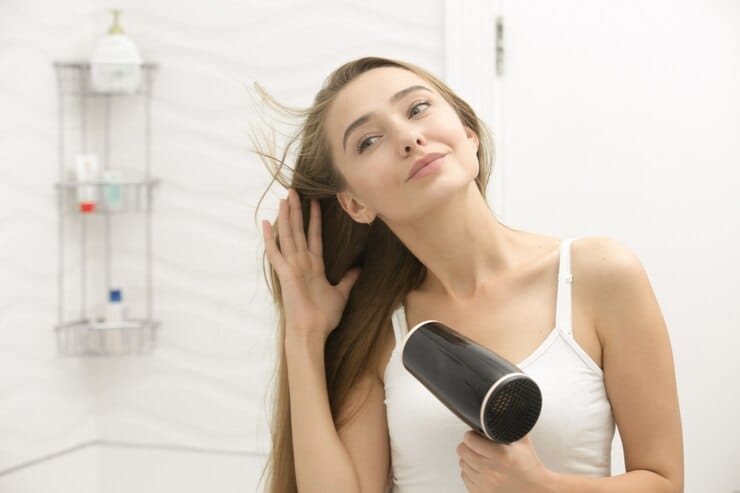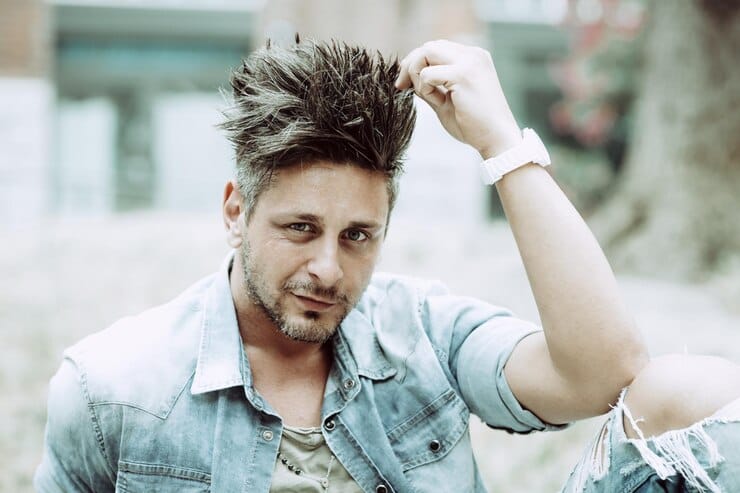Heat styling has become an integral part of many people’s grooming routines, enabling them to achieve sleek, straight, or perfectly curled hair effortlessly. However, while these styling tools offer immediate gratification, they can also have detrimental effects on the health and appearance of your hair in the long run. In this article, we’ll delve into the effects of heat styling on hair and provide valuable tips for minimizing damage.
Understanding heat styling

Before we explore its effects, let’s first understand what heat styling entails. Heat styling involves the use of hot tools such as flat irons, curling wands, and blow dryers to alter the texture and shape of the hair. These tools apply heat directly to the hair strands, which can have both temporary and permanent effects.
Effects of Heat Styling on Hair

Damage to Hair Cuticles
One of the primary effects of heat styling is damage to the hair cuticles—the outermost layer of the hair shaft. When exposed to high temperatures, the cuticles can become raised or lifted, leading to a rough and frizzy hair texture. Over time, repeated heat styling can cause the cuticles to weaken, making the hair more susceptible to breakage and split ends.
Weakening of the Hair Shaft
The intense heat from styling tools can also weaken the hair shaft, making it more susceptible to damage and breakage. Prolonged exposure to high temperatures can cause the proteins in the hair shaft to break down, resulting in brittle and fragile hair.
Loss of Moisture and Natural Oils
Heat styling can strip the hair of its natural moisture and oils, leaving it dry, dull, and prone to dehydration. The heat opens up the hair cuticles, allowing moisture to escape from the inner layers of the hair shaft. This loss of moisture can lead to dryness, frizziness, and an overall lackluster appearance.
Signs of heat damage

It’s essential to recognize the signs of heat damage to address the issue promptly. Some common signs include increased frizziness, split ends, and brittleness. If you notice these symptoms, it’s a clear indication that your hair may be suffering from the effects of heat styling.
Tips for Minimizing Heat Damage

While it may be challenging to give up heat styling altogether, there are several measures you can take to minimize damage:
Use heat-protectant products.
Before subjecting your hair to heat styling, always apply a heat-protectant spray or serum to create a barrier between the heat and your hair. These products help reduce the impact of high temperatures and prevent damage.
Adjust heat settings.
Most heat styling tools come with adjustable heat settings. Opt for lower temperatures whenever possible, especially if you have fine or delicate hair. Avoid using the highest heat setting unless absolutely necessary.
Limit the frequency of heat styling.
Give your hair regular breaks from heat styling by embracing heat-free hairstyles or air-drying techniques. Limit the use of hot tools to a few times a week to allow your hair time to recover and rejuvenate.
Alternatives to Heat Styling

Consider exploring alternative styling methods that don’t involve heat:
Air-Drying Techniques
Allow your hair to air dry naturally whenever possible. Apply styling products to damp hair and let it dry on its own to minimize exposure to heat.
Heatless styling methods
Experiment with heatless styling methods such as braiding, twisting, or using foam rollers to achieve curls and waves without subjecting your hair to heat.
Protective Hairstyles
Opt for protective hairstyles such as buns, braids, or updos to minimize manipulation and reduce the need for daily heat styling.
Choosing the Right Heat Styling Tools

When selecting heat styling tools, prioritize quality over quantity.
Ceramic vs. metal plates
Choose styling tools with ceramic plates, as they distribute heat more evenly and reduce the risk of hot spots that can damage the hair.
Ionic Technology Benefits
Consider investing in tools with ionic technology, which emit negative ions to neutralize static and frizz, resulting in smoother and shinier hair.
Hair Care Routine for Heat-Damaged Hair

If your hair is already damaged from heat styling, follow a dedicated hair care routine to repair and restore its health:
Hydrating Shampoos and Conditioners
Use hydrating shampoos and conditioners formulated to nourish and moisturize dry, damaged hair.
Weekly deep conditioning treatments
Incorporate weekly deep conditioning treatments or hair masks to replenish lost moisture and strengthen the hair from within.
Trimming damaged ends regularly
Schedule regular trims to remove split ends and prevent further damage from traveling up the hair shaft.
Healthy Habits for Hair

In addition to minimizing heat damage, adopt healthy habits to promote overall hair health:
A balanced diet rich in nutrients
Maintain a balanced diet rich in vitamins, minerals, and protein, which are essential for healthy hair growth and maintenance.
Proper Hydration
Stay hydrated by drinking an adequate amount of water daily to support overall hair and scalp health.
Avoiding Over-Washing and Harsh Chemicals
Avoid over-washing your hair and using harsh chemicals or styling products that can strip away natural oils and cause further damage.
Conclusion
While heat styling can be a convenient way to achieve your desired hairstyle, it’s essential to be mindful of its potential effects on your hair’s health. By understanding the impact of heat styling and implementing the tips provided in this article, you can minimize damage and maintain beautiful, healthy hair in the long run.
FAQs
- How often should I use heat styling tools?
- Limit the use of heat styling tools to a few times a week to prevent excessive damage to your hair.
- Are there any heat styling tools that are less damaging?
- Look for tools with ceramic plates and ionic technology, as they are gentler on the hair compared to metal plates.
- Can heat damage be reversed?
- While you can’t undo heat damage entirely, you can improve the appearance and health of your hair through proper care and maintenance.
- What should I do if my hair is already damaged from heat styling?
- Focus on deep conditioning treatments, regular trims, and minimizing further heat exposure to help repair and restore your hair’s health.
- Are there any natural alternatives to heat styling?
- Yes, there are plenty of heatless styling methods such as braiding, twisting, and air-drying that can help you achieve beautiful hairstyles without using heat.







